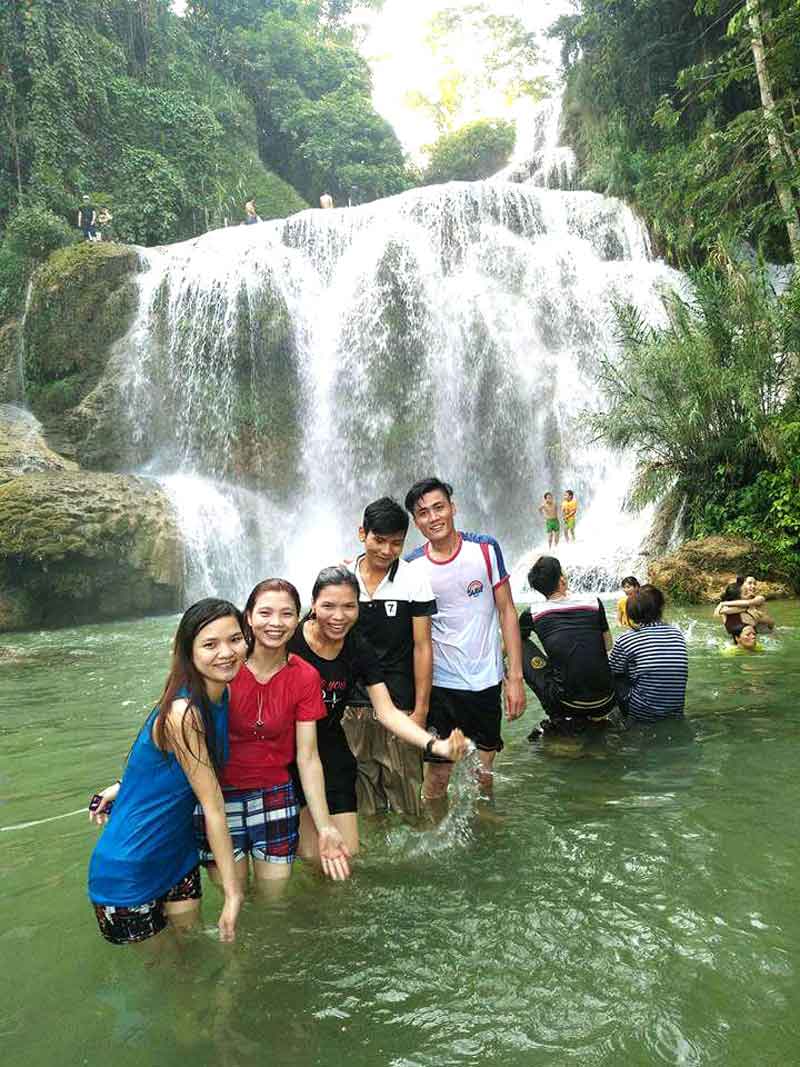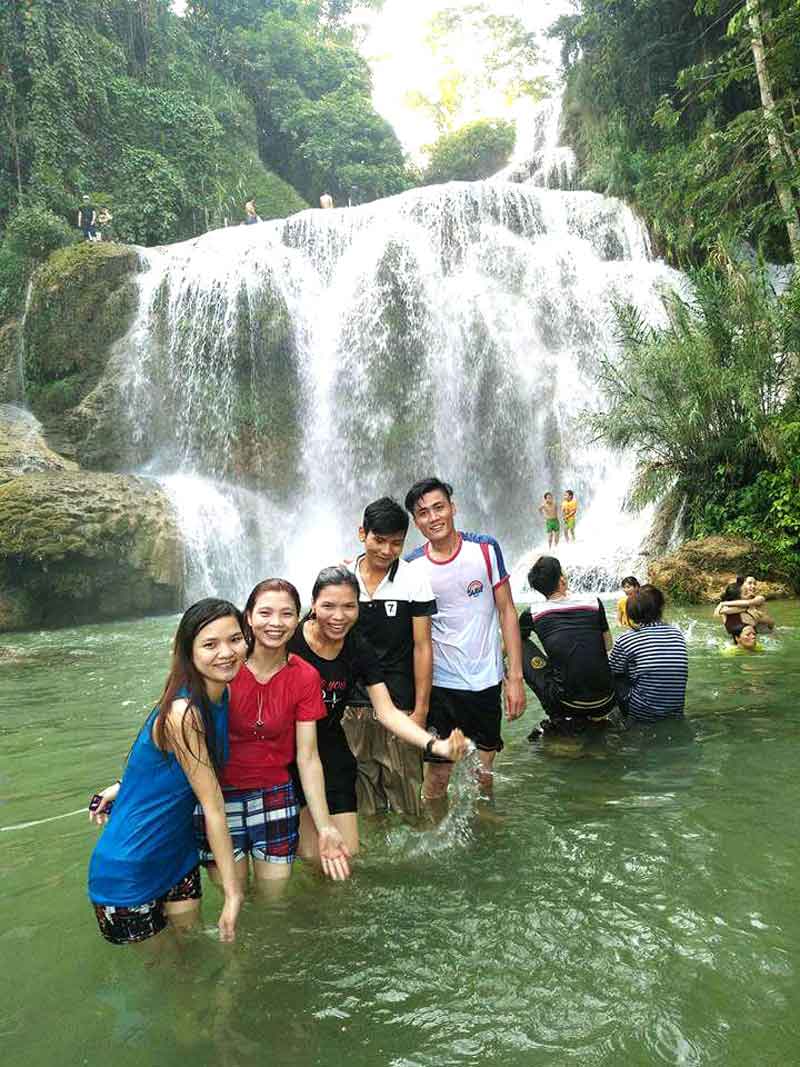



A landscape of Mu Waterfall, in Tu Do commune
(Lac Son district), is a tourist site to attract visitors in the summer.
Since being known by many visitors, Mu
Waterfall has become one of the most popular tourist sites in the hot summer
days. The fall is high, and its water is clear, cool and fresh, which is a gift
from Mother Nature presenting for people living in highlands which are remote
and lonely. Mu Waterfall’s attraction has opened a potential direction of
tourism developments. In order to meet the needs of visitors, people in Tu Do
commune have provided homestay services.
According to Ms. Quach Thi Hanh, one of the
households providing homestay services in Mu hamlet, said: "The summer is a
time that Mu Waterfall welcomes the most visitors. Particularly, there are some
foreigner groups travelling in tours, and the remaining ones are mainly
domestic visitors. In last two years, the number of visitors has increased
suddenly, for example of some days, the family received over 200 guests. In
order to meet the needs of tourists, the family had to hire more employees in
the hamlet. Tourism has and is bringing significant incomes for my family as
well as many local people”.
Beside Mu Waterfall, Tu Do commune has other
sites possessing similar beautiful landscapes. This is Cao Waterfall or Dong Be
Green highland. Especially, at the highland, people have maintained the
traditional stilt houses. "At Ry hamlet and other many hamlets, most of people
still live in stilt houses and maintain the customs of the Muong people. The
weather here is fresh and cool during the year so many tourists from other
places behaved their interests. We expect the authorities to support for
tourism development” said by Mr. Bui Van Huy, Head of Ry hamlet.
Indeed, Mu Waterfall, Bui Highland, Nha
Highland and the naive local people have left a good impression in the hearts
of many tourists. Ngoc Son, Ngoc Lau and Tu Do communes are also great
destinations for those who prefer to explore the natural scene and enjoy the
fresh air after the chaos and tornado of life.